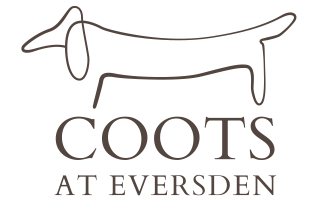What's Best for Your Dachshund, Collar or Harness?
As enthusiasts and caretakers of the beloved dachshund breed, we at Coots at Eversden have navigated the many aspects of their care and training with both pride and diligence. A common question we face from new and fellow Sausage owners revolves around the choice between using a collar and lead or opting for a harness and lead. Through our extensive experience, especially within the world of show dachshunds, we’ve cultivated a perspective that leans towards the traditional collar and lead, and we’re here to share why.
Collars and Leads
At Coots, our dedication to raising show-quality dachshunds isn’t just about aesthetics; it’s about upholding the health, temperament, and well-being of these remarkable Sausages. The use of collars and leads in our training regimen is rooted in this commitment. We’ve found that collars afford a level of precision and control that is indispensable, not only on the show floor but in the foundational stages of a dachshund’s training. Every infant that starts their journey with us receives basic collar and lead training, ensuring they’re well-prepared for life with their future families.
The Harness Dilemma
While harnesses have gained popularity for their perceived comfort and style, our experience has led us to approach them with caution for several reasons. Foremost among these is the concern for a Sausage’s delicate spine. Harnesses, by their design, distribute pressure across the back and shoulders, which can aggravate or contribute to spinal issues, like Intervertebral Disc Disease (IVDD).
Additionally, for long-haired dachshunds, harnesses often lead to practical challenges, such as knotting and matting of their fur behind the front legs, which can become a grooming headache and, in some cases, require cutting the hair to rectify.
Finding a harness that truly fits the unique body shape of a dachshund can also be a tall order. Many harnesses on the market are not designed with the dachshund’s long body and short stature in mind, leading to discomfort and even injury from rubbing and poor fit.
When Might a Harness Be Appropriate?
We recognise that there are scenarios where a harness may be deemed necessary, such as securing your Sausage in a car for safety reasons. Moreover, for dachshunds who exhibit a strong exploratory instinct, a harness might provide a more manageable solution to guide them without undue pressure on their neck.
Our Stance
It’s important to clarify that our preference for collars over harnesses is not a blanket statement against the latter. It is, instead, a stance informed by the specific needs and well-being of the dachshund breed. Fashion or trend should never overshadow the functional and health considerations of our pets.
It is our belief that the collar and lead are the best option for the majority of Dachshund owners, considering the breed’s specific needs, training benefits, and potential risks related to their distinct anatomy. We urge dachshund owners to carefully weigh these factors and consistently prioritise the well-being and contentment of their beloved pets.
For further insights into the collar vs. harness debate from our perspective, we recommend listening to our recording.





